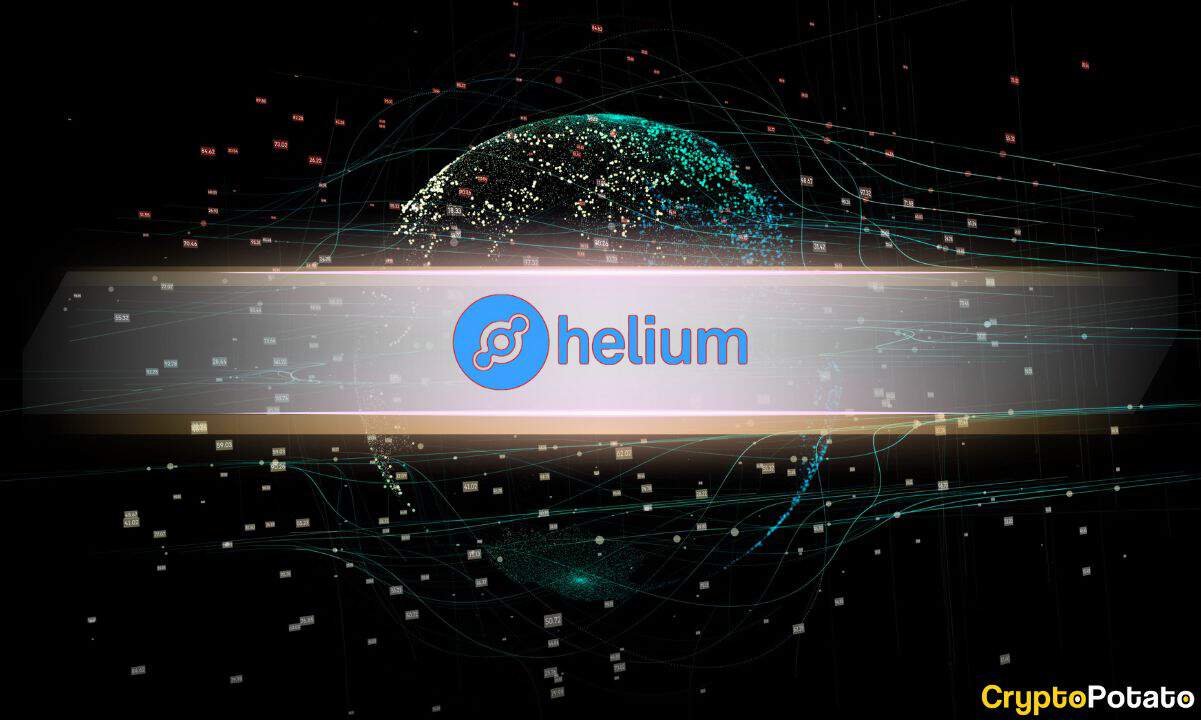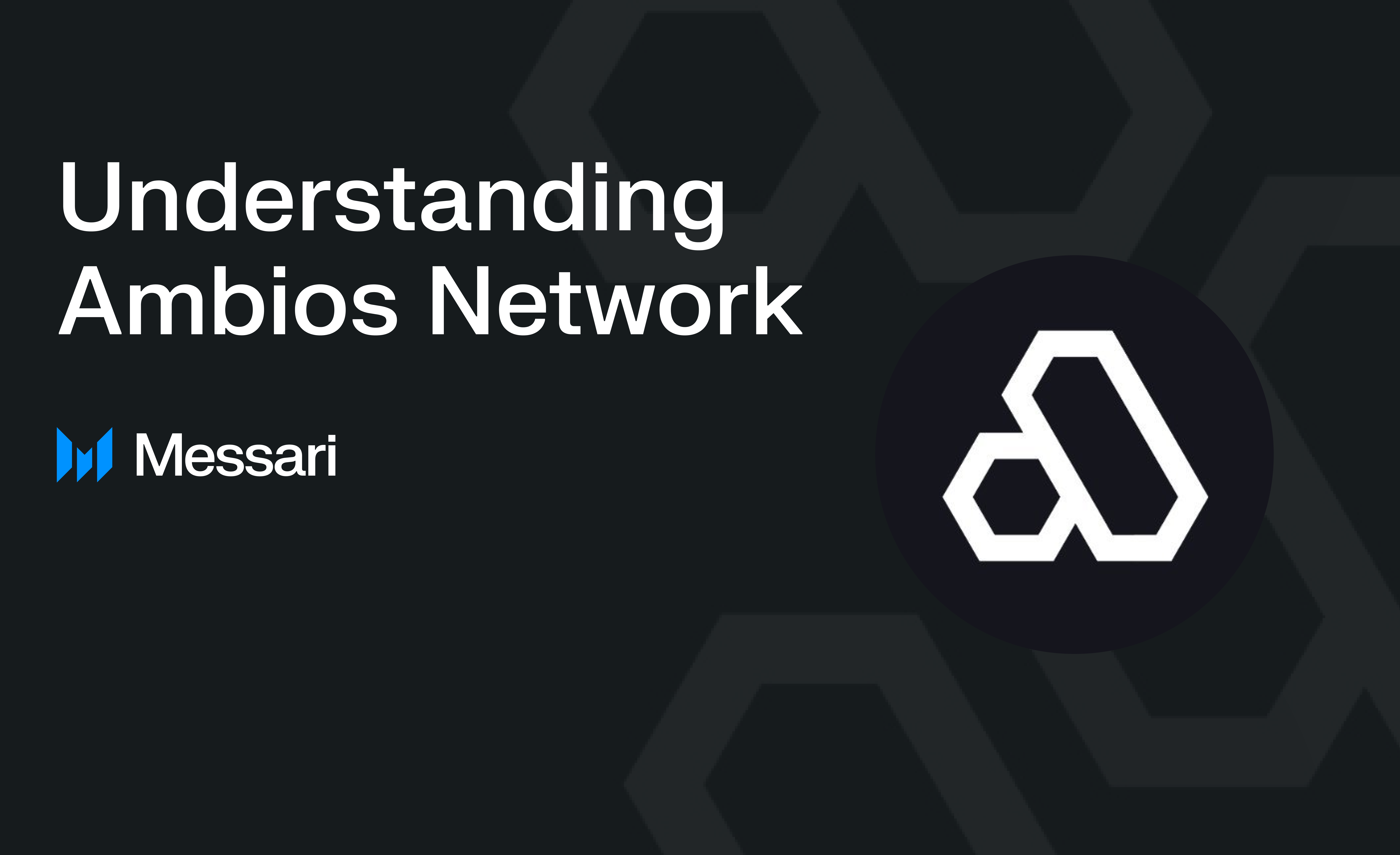Latest Solana News

2 months ago
The Hybrid Nature of DePIN: Balancing On-Chain and Off-Chain Computations
The Decentralized Physical Infrastructure Network (DePIN) is emerging as a significant narrative in the cryptocurrency space, yet many projects within this domain are not fully on-chain as one might expect. DePIN projects, which connect and manage physical devices like wireless networks and energy grids, often rely on off-chain computations to handle the vast amounts of data generated. For instance, Helium, a prominent DePIN project, transitioned from its own blockchain to Solana in April 2023, seeking faster transaction speeds. However, even Solana's capabilities may not suffice for the real-time processing demands of many DePIN applications, leading to a hybrid model where off-chain computations are utilized alongside on-chain data recording.
Shuyao Kong, co-founder of the upcoming MegaETH, highlights that while some DePIN projects may market themselves as blockchain-centric, the reality is that fully on-chain applications are often inefficient and costly. The need for real-time computation, especially for executor devices that require immediate responses, complicates the feasibility of purely on-chain solutions. Zhe Wang, CEO of DEPHY network, categorizes IoT devices into sensors and executors, noting that while sensor data can be more easily managed off-chain, executor data demands prompt processing to avoid potential hazards. This necessity for speed and efficiency drives many DePIN projects to adopt a hybrid approach.
Looking ahead, the future of DePIN may involve a shift towards more specialized blockchain architectures that can better accommodate the unique computational needs of various applications. While current blockchain technologies struggle to support real-time transactions, there is potential for improvement as scalability advances. Experts predict that future DePIN projects will increasingly leverage modular designs, optimizing execution environments for specific tasks such as biometric processing or high-frequency sensor networks, thus balancing the benefits of on-chain and off-chain processes effectively.

2 months ago
Beamable Shines at GDC 2025: A New Era for Decentralized Gaming
Beamable made a significant impact at GDC 2025, showcasing its commitment to decentralized gaming and innovative infrastructure. The event kicked off with an exclusive brunch that gathered industry leaders from major firms like A16z, Binance, and Meta. This gathering was not just a social event; it served as a platform for discussing the future of decentralized gaming and how Beamable's infrastructure can empower developers to create scalable and successful games. The atmosphere was charged with excitement as insights were exchanged, setting the stage for fruitful collaborations.
Throughout the conference, Beamable's leadership took center stage at various summits, including the Beamable x Solana Developer Summit. CEO Jon Radoff and CTO Ali El Rhermoul presented on the advantages of decentralized infrastructure for live game operations, emphasizing how it can mitigate backend risks and enhance cost efficiency. Additionally, COO Trapper Markelz engaged developers with real-time demos at the Sui Gaming Summit, focusing on Web3 monetization strategies. These sessions highlighted the importance of adopting Web3-native solutions in today's gaming landscape.
The networking opportunities at GDC 2025 were unparalleled, with Beamable hosting a lively happy hour that attracted a diverse crowd of developers and founders. The event fostered discussions about game development and backend tools, solidifying Beamable's role as a key player in the industry. With numerous meetings held throughout the week, Beamable connected with various studios and publishers, addressing their technical challenges and exploring partnership opportunities. As GDC 2025 concluded, Beamable remains committed to driving innovation in decentralized gaming and looks forward to continuing these conversations beyond the event.

2 months ago
Solana's Remarkable Rebound: Price Surge and Ecosystem Developments
In the past week, Solana has experienced a significant rebound, with its price surging 12% to reach $140. This uptick in value comes amid renewed market optimism, spurred by the Trump administration's softened stance on tariff negotiations and the U.S. Federal Reserve's decision to maintain interest rates. The total value locked (TVL) in Solana's ecosystem has also risen to an impressive $72 billion, reflecting growing confidence among investors. Notably, Solana's stablecoin supply has hit record levels, surpassing $12.8 billion, indicating robust liquidity and adoption within the network.
In ecosystem developments, Pump.fun has launched its decentralized exchange (DEX), PumpSwap, which aims to streamline trading for Solana meme coins. This move has prompted Raydium to introduce LaunchLab, a platform designed to compete with Pump.fun and retain its market share. Additionally, Volatility Shares has debuted two funds tracking Solana futures, SOLZ and SOLT, providing investors with new avenues for exposure to the layer-1 network. As institutional interest grows, Fidelity has registered the "Fidelity Solana Fund," potentially paving the way for a Solana ETF, which could further enhance market dynamics.
Despite the positive trends, Solana's decentralized exchange volume has seen a decline, dropping 20% to $8.06 billion. However, the overall market sentiment remains bullish, with Solana outperforming its rivals, including Ethereum and Bitcoin. The ecosystem's market cap has increased by 10%, and daily active addresses have risen to over 3.8 million. As Solana continues to innovate and attract attention, the coming weeks will be crucial in determining its trajectory in the competitive blockchain landscape.

2 months ago
Helium Network Expands Despite Token Decline and Past Controversies
In the fourth quarter, Helium's native token, HNT, experienced a significant decline, with its circulating market capitalization dropping from $1.3 billion to $1.0 billion, marking a 20% quarter-over-quarter decrease. The token's price also fell by 22%, decreasing from $7.54 to $5.88. Despite this downturn in the market, the Helium network continued to expand, particularly in the area of hotspot adoption. According to a report from Messari, Helium Mobile's number of hotspots grew by 14% QoQ, reaching 24,800 from 21,800. The service's unlimited plans remain competitively priced compared to traditional telecom providers in the US, and the introduction of the Discovery Mapping feature has incentivized users to share location data, although rewards have recently shifted from HNT to Cloud Points.
During the recent Hurricane Helene in North Carolina, Helium Mobile showcased its utility by maintaining operational hotspots that provided 5G coverage while many were left without electricity or water. The team also took proactive measures by distributing emergency kits, including Starlink devices, to assist affected communities. In addition to Helium Mobile, the IoT network also saw a 20% increase in hotspots during Q4, with a total of over 375,000 hotspots onboarded since migrating to Solana in early 2023. However, despite rapid infrastructure growth, demand has not yet caught up, as evidenced by low daily data credits (DC) usage.
Helium has faced controversies in the past, including allegations that its founders hoarded a significant portion of early token rewards, with insiders reportedly mining millions of HNT tokens worth $250 million at their peak. Additionally, Helium faced criticism for overstating partnerships, such as with Lime, the rideshare company, which clarified that their relationship was limited to a 2019 test. Similar issues arose with Salesforce, which denied any partnership, leading Helium to remove their logos from promotional materials. These controversies have raised questions about the company's transparency and the sustainability of its growth strategies.

2 months ago
Solana DePIN Sees Significant Growth Amidst Meme-Coin Decline
In February, the decentralized physical infrastructure network (DePIN) associated with Solana [SOL] experienced a notable rebound, driven by significant user growth in key projects such as Helium and Hivemapper. Helium Mobile reported a remarkable ninefold increase in users, reaching 145,000, marking its highest growth in a year. Hivemapper, a community-driven alternative to Google Maps, also saw its demand triple due to the introduction of new mapping devices. Collectively, these projects maintained steady revenues of approximately $350,000, indicating a stabilization in the DePIN sector for 2025.
The resurgence of DePIN could potentially serve as a catalyst for SOL's value, especially following a significant decline in meme-coin activity that adversely affected Solana's decentralized exchange (DEX) volumes. In January, during the peak of DEX activity, SOL reached a record high of $295, largely fueled by the excitement surrounding the TRUMP memecoin. However, a subsequent 60% drop in DEX volumes led to a decline in SOL's value, which has since stabilized above the $120 support level. The question remains whether DePIN can fill the void left by meme coins and bolster SOL's value moving forward.
Despite the resurgence of DePIN, the overall network activity within the Solana ecosystem remains heavily influenced by meme coins. Active addresses surged to 5.7 million during the TRUMP meme-coin craze in mid-January but saw a decline throughout February. Although there was a slight increase in active addresses to 4.4 million, this was followed by a drop to 2.7 million by the end of the month. By mid-March, the number of active addresses stabilized at 3.11 million, reflecting a 45% decrease from January's peak. As of now, SOL is valued at $130, maintaining its position above the critical 2024 support zone, leaving uncertainty about whether it can avoid further corrections.

2 months ago
Roam: Pioneering the DePIN Track in Web3 Integration
In 2025, the DePIN track is emerging as a vital link between Web3 and real-world applications. According to the "DePIN Annual Report" by Messari, over 13 million DePIN devices are currently operational globally, contributing to infrastructure networks. Despite being in its infancy and representing less than 0.1% of the trillion-dollar terminal market, DePIN has attracted more than $350 million in early funding. As the on-chain battle intensifies in 2024, Solana is leading the charge in network infrastructure, while ROAM has gained significant traction with nearly 3 million WiFi nodes and 2.5 million users, showcasing its rapid growth and community engagement.
Roam's impressive expansion is attributed to its integration of OpenRoaming technology and blockchain DID/VC technology, alongside a business model that combines free eSIM services with token incentives. This approach not only broadens its wireless network reach but also facilitates user entry into the Web3 ecosystem, offering continuous income opportunities. The recent launch of the ROAM token on 12 exchanges, including Bybit and Bitget, saw a remarkable trading volume of $120 million on its first day, establishing it as a leader in decentralized wireless networks. Roam's unique dual deflationary economic model further enhances its revenue potential, shifting focus from supply-side growth to demand-side exploration.
Looking ahead, Roam is poised to solidify its position in the DePIN track through innovative applications and robust token economics. The upcoming use cases for ROAM tokens in gaming centers and credit card transactions will enhance user engagement and token consumption. With a total supply of 1 billion tokens and a strategic dual deflationary mechanism, Roam aims to create scarcity and drive long-term value. As it continues to expand its global open wireless network, Roam exemplifies the potential of decentralized technologies in shaping the future of connectivity and AI development, warranting close attention from the blockchain community.

2 months ago
Helium Network Shows Remarkable Growth in Q4 2024
Messari, a prominent crypto research firm, has released its latest report titled "State of Helium Q4 2024," which provides an in-depth analysis of the Helium Network's growth, adoption, and operational advancements during the last quarter of 2024. The report highlights significant metrics, including a staggering 555% increase in offloaded data, totaling over 576 TB. This growth is attributed to the expansion of the DePIN (Decentralized Physical Infrastructure Networks) project, particularly in mobile and IoT network capabilities, showcasing Helium's robust performance in a competitive landscape.
In Q4 2024, Helium Mobile experienced a 7% growth in subscribers, reaching over 124,000 users for its unlimited talk and text messaging service, with recent updates indicating this number has surpassed 150,000. The network also saw a 14% increase in mobile hotspots, totaling 24,800, while IoT hotspots grew by 20% to 32,900 following its migration to the Solana blockchain. Notably, partnerships with major telecom companies, such as Telefonica in Mexico, and the integration of Ameriband’s 100,000+ Data-Only Hotspots, have significantly enhanced Helium's coverage and operational capabilities across the U.S.
The report also discusses Helium's strategic implementation of HIP 138, which aims to simplify its token structure by unifying under HNT. This change is designed to lower barriers for new participants by redistributing HNT emissions, with 70% directed to the MOBILE subnetwork and 30% to the IOT subnetwork. Furthermore, Helium's inclusion in Coinbase’s COIN50 index and a case study at Harvard Business School underscore its growing relevance in the DePIN sector. As Helium continues to innovate and collaborate, its role as a leader in facilitating global connectivity and supporting other DePIN projects solidifies its position in the blockchain ecosystem.

2 months ago
Ambios Network: Pioneering Decentralized Environmental Monitoring with $AMBIOS Token Launch
Ambios Network is revolutionizing environmental monitoring through its decentralized platform that collects real-time air quality data. By leveraging low-cost sensors, Ambios enables transparent data sharing with various stakeholders, including data marketplaces and AI platforms. The upcoming launch of the $AMBIOS token in Q1 2025 on the Solana blockchain, with a capped supply of 1 billion tokens and halving-based emissions for mining, marks a significant milestone for the project. This transition from Algorand to Solana, completed in late 2024, aims to enhance throughput and reduce costs, allowing for efficient microtransactions across its network of over 50,000 users and 8,000 sensors, positioning Ambios among the top decentralized physical infrastructure networks (DePIN).
The decentralized approach of Ambios Network offers numerous advantages over traditional environmental monitoring systems. By deploying thousands of citizen-hosted air quality nodes, the platform achieves cost efficiency and extensive coverage, capturing hyperlocal data that centralized systems often miss. The incentivization model rewards individuals for hosting sensors and contributing data, fostering community engagement and long-term participation. Furthermore, the scalability of Ambios allows for democratized access to environmental data, enabling various industries to utilize this information for better decision-making in urban management and public health.
Ambios Network's partnerships with notable entities, such as Best Western and CMG Companies, showcase its real-world applications in enhancing indoor air quality and operational efficiency. As the platform prepares for its Token Generation Event (TGE) and continues to expand its ecosystem, it stands to tap into a multi-billion dollar market for accurate environmental data. The strategic migration to Solana not only improves operational efficiency but also positions Ambios to leverage the growing DePIN ecosystem, ultimately benefiting both the community and the environment.

3 months ago
Roam: Disrupting the Telecom Sector with Decentralized WiFi Solutions
The telecommunications industry is undergoing a significant transformation as traditional operators grapple with financial pressures and outdated business models. Roam (ROAM) is emerging as a disruptive force in this sector by offering a decentralized global WiFi network that connects users to over 3 million access points worldwide. By leveraging blockchain technology, Roam provides a secure, password-free connectivity solution while rewarding users and hosts for their participation. Since its inception, Roam has grown to 1.8 million users, showcasing the market's enthusiasm for its innovative approach to connectivity and economic opportunities.
Founded in late 2021 as MetaBlox, Roam quickly evolved into an industry leader, launching its first WiFi-Miner in 2022 and becoming the only official web3 partner of the Wireless Broadband Alliance. The Roam app, released in late 2022, enables users to connect to over 1 million free decentralized WiFi hotspots through OpenRoaming. Despite the challenges posed by the bear market in 2023, Roam has continued to innovate, implementing decentralized identifiers (DIDs) and verifiable credentials (VCs) for enhanced security. The rebranding to Roam and migration to the Solana mainnet in 2024 marked a significant milestone, as the network expanded to over 100,000 nodes and 50,000 app users, further solidifying its position in the market.
Roam's vision is to establish a decentralized global WiFi network that transforms connectivity delivery and monetization. Key objectives include creating seamless access to web3 and the metaverse, enhancing data security, and fostering global community participation. The platform incentivizes contributions through Roam Points, which can be converted to tokens after the token generation event. With a comprehensive suite of products, including high-performance routers and a user-friendly app, Roam is positioned to redefine how users access and benefit from internet connectivity, ultimately challenging traditional telecom models and paving the way for a more decentralized future.

3 months ago
Coldware Emerges as a Strong Competitor to Solana in Blockchain Innovation
The cryptocurrency landscape is witnessing a significant evolution, with Coldware (COLD) emerging as a formidable competitor to established platforms like Solana (SOL). Coldware is leveraging its innovative DePin (Decentralized Physical Infrastructure Networks) model alongside Internet of Things (IoT) technology to create a unique ecosystem that addresses scalability and real-world applications. This integration aims to facilitate the development of decentralized networks that can be applied in various sectors, including smart cities and energy grids, thereby providing a sustainable and scalable solution for users seeking more than just fast transactions.
While Solana has been celebrated for its high-speed transactions and low fees, it faces increasing scrutiny due to network congestion and scalability issues during peak usage. These challenges raise concerns about Solana's ability to support long-term growth as demand for decentralized applications (dApps) and decentralized finance (DeFi) continues to rise. In contrast, Coldware's focus on decentralized physical infrastructure and IoT integration positions it as a strong alternative, potentially attracting investors looking for innovative solutions that extend beyond traditional blockchain functionalities.
As Coldware successfully raised $1.3 million during its presale, the project is poised for significant growth. The combination of decentralized finance and IoT is likely to appeal to both institutional investors and everyday users, further enhancing Coldware's market position. As the rivalry between Coldware and Solana intensifies, the blockchain community is keenly observing how Coldware's unique approach could redefine the landscape, potentially leading to a new era of blockchain technology that prioritizes real-world integration and sustainability over mere transactional speed.
Signup for latest DePIN news and updates